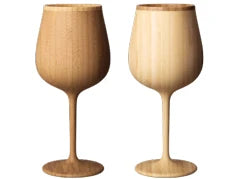French and Italian wines are world-famous, but Japanese wines have also been gaining attention in recent years.
Japanese wine was served to the leaders of each country at the 2016 Ise-Shima Summit, and its delicate and gentle flavor became a hot topic.
This time, we'd like to talk about Japanese wine.
New World and Old World Wines
In Europe, where the terrain and climate are suitable for growing grapes, wine has been produced since ancient Roman times.
Especially famous are wines from southern Europe, such as France, Italy, and Spain, which are known as "Old World wines."
Wine is made using production and brewing methods that have been developed throughout history, and the wines of each producing region have spread throughout the world along with food culture.
On the other hand, winemaking was introduced to countries after the Age of Discovery and wines from countries that just started producing wine are called "New World wines."
Chile, the United States, and Argentina are famous for this, and Japanese wine is also part of the "New World wine" category.
New World wines actively incorporate new agricultural techniques and brewing methods, and are characterized by their rich fruitiness and lower prices than Old World wines.

Japanese Wine
Japanese wine is wine made "only using grapes harvested in Japan."
Unlike domestic wines made from imported grapes, Japan's climate and geography are reflected in the flavor of the wine.
The history of Japanese wine is relatively new among "New World wines." Japan's first winery was established in Yamanashi, a prefecture well suited to grape cultivation, during the Meiji period.
While the two major wine producing regions in France are Burgundy and Bordeaux, the two major wine producing regions in Japan are Yamanashi and Nagano.
Grapes prefer soil with large daytime temperature differences and good drainage, so they are well suited to the regions of Nagano and Yamanashi surrounded by the Japanese Alps, and are widely cultivated there.
Yamanashi in particular is home to approximately 40% of Japan's wineries and is famous for wine made from white grapes named after "Koshu," the birthplace of Japanese wine.
In the history of wine, Japanese wine is a newcomer and it took a while for it to gain recognition. However, as a result of the tireless efforts of farmers and wineries, Japanese wine won its first gold award and the highest regional award at the DWWA: Decanter World Wine Awards held in London in 2014, and began to attract attention from overseas.
Characteristics of Japanese Wine
French wines are made to go well with French cuisine, Italian wines with Italian cuisine, and Japanese wines with Japanese cuisine.
Japanese wine is characterized by its delicate and gentle flavor, which brings out the umami flavor unique to Japanese cuisine and enhances its flavor.
In recent years, health-conscious Japanese cuisine has become popular worldwide, and Japanese wine, which pairs well with Japanese food, is becoming increasingly popular.
For example, Koshu grapes are low in iron, which helps to reduce the fishy smell of fish, making them an easy pairing with raw fish, a staple of Japanese cuisine, such as sashimi and sushi.
Additionally, red wines are not heavy and full-bodied, but rather tend to be refreshingly light- or medium-bodied, which means they enhance the flavor of soy sauce and other sauces used in meat dishes such as yakitori, sukiyaki, and kakuni without overpowering them.

It's also nice to pair Japanese wine with seasonings as well as fish and meat dishes.
For example, a refreshing red wine goes well with yakitori sauce, while a fruity white wine goes well with salt.
Sake and beer go well with Japanese food, but Japanese wine also goes quite well with Japanese food.
In these times when we are spending more time at home, it can be fun to explore the marriage of flavors that suits your tastes.
Bamboo tableware to go with Japanese wine

Japanese cuisine is delicate and flavorful, cultivated through Japanese tradition, and Japanese wine is made to match its flavor. While we're at it, we also chose tableware made from materials familiar to Japan.
Since ancient times, Japanese people have had a deep connection with bamboo, using it for a wide range of purposes, including tableware, daily necessities, agriculture, and fishing.
Why not enjoy some Japanese wine and Japanese cuisine with tableware made from bamboo, which is so familiar to Japanese people?
RIVERET's bamboo tableware, which includes wine glasses and plates, is characterized not only by its familiar material and design, but also by its ease of use, as it is dishwasher safe.
It seems like it would be fun to take a fresh look at Japanese culture.





